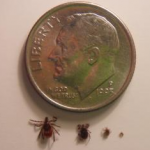ticks
It’s been nearly two decades since the last publication of a nationwide survey on the distribution of blacklegged ticks — the primary transmitters of Lyme disease. That survey, released in 1998, reported the tick in 30 percent of U.S. counties. Today, a new study using similar surveillance methods has found the tick in more than 45 percent of counties.
“These kinds of changes tend to be gradual,” study co-author Rebecca Eisen, a research biologist in the Centers for Disease Control and Prevention’s Division of Vector-Borne Diseases, told me. “But when you see the cumulative change over 20…
I mentioned yesterday that this week is Naturopathic Medicine Week 2014, or, as I like to call it, Quackery Week. At the time, I wasn’t sure when or if I was going to do another post about the quackery that is naturopathy this week. I was going to play it by ear and see what came up. Then, one of my commenters mentioned this subreddit, Read what naturopaths say to one another. Conclusion: manipulative, poorly trained, and a threat to public health. Now, I’m not a big fan of Reddit, largely because I can’t figure out how to find things easily, and I hate the sheer ugly and user hostile…
Student guest post by Kyle Malter
In many areas of the country there is a vile blood sucker that lurks in our forests, our parks and even our backyards. What concerns us is not what this creature takes but rather what it leaves in our body after it bites us: corkscrew shaped bacteria called spirochetes and with the name Borrelia burgdorferi. When the bacteria invade our bodies and cause problems along the way we call it Lyme disease.
It is Lyme, not “Lymes” disease, and here’s how it got that name. In the early 1970’s a large number of cases emerged involving children with a…
This is the last of 16 student posts, guest-authored by Jessica Waters.
Climatologists have been warning us about the ongoing and impending consequences of global warming for years. But the results of climate change affect more than just polar bears and penguins - if you live anywhere in the northeastern, north-central or west coast states of the U.S.., you could be at a greater risk for contracting Lyme Disease.
Lyme disease is an infection of the Borrelia burgdorferi bacterium that is spread through black legged ticks (otherwise known as deer ticks) who feed on the…
It's Thursday night. Here's a tick:
Photo details: Canon MP-E 65mm 1-5x macro lens on a Canon EOS 50D
ISO 100, f/13, 1/250 sec, flash diffused through tracing paper
